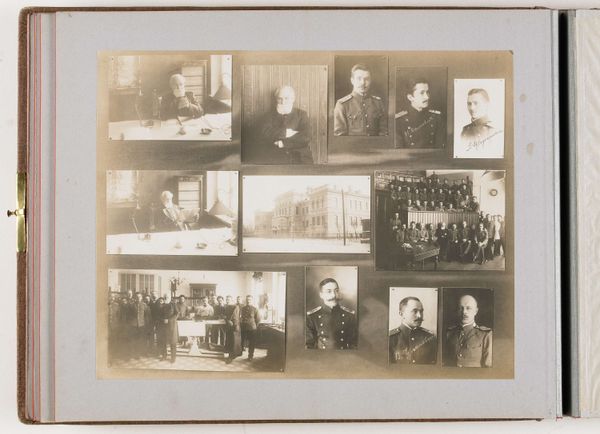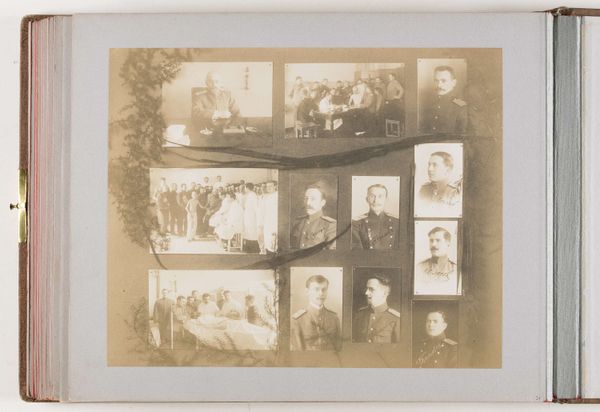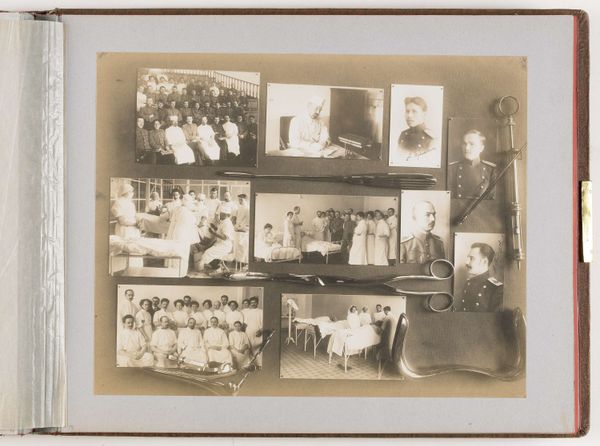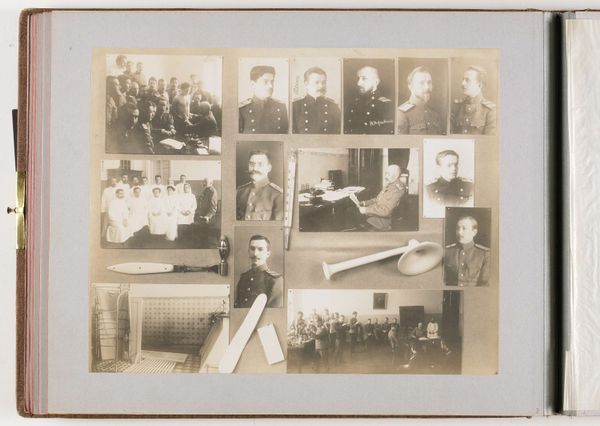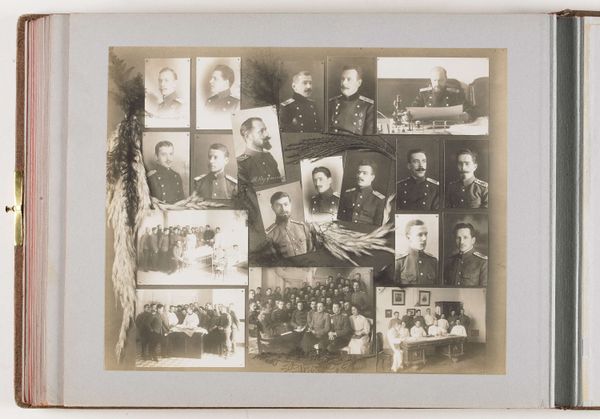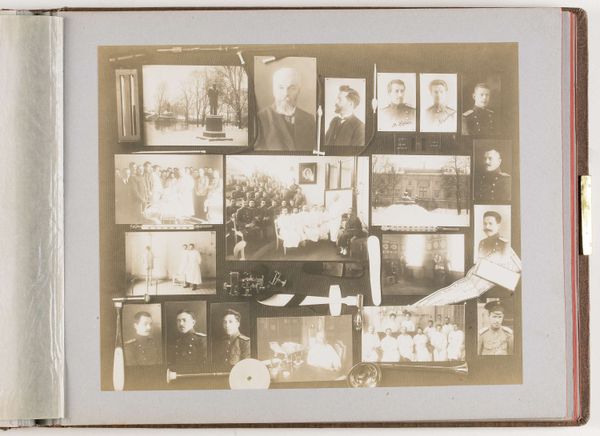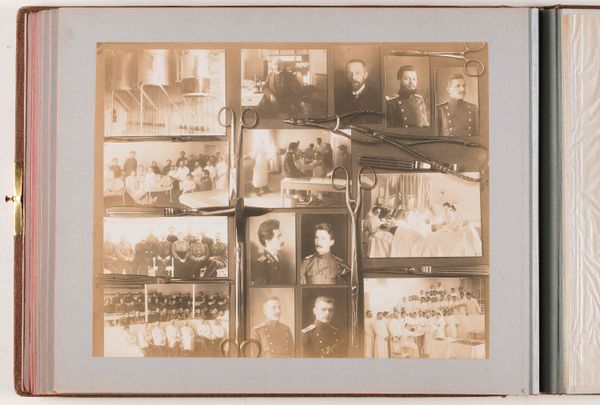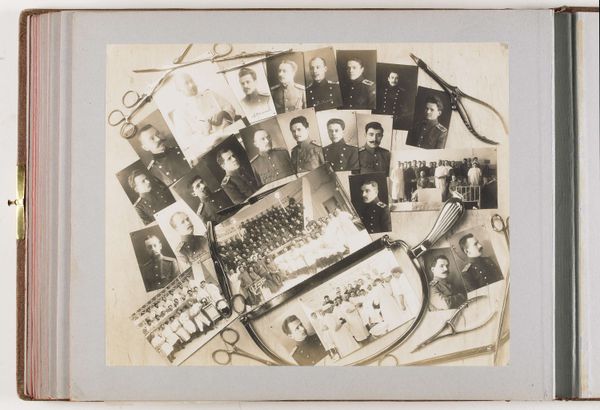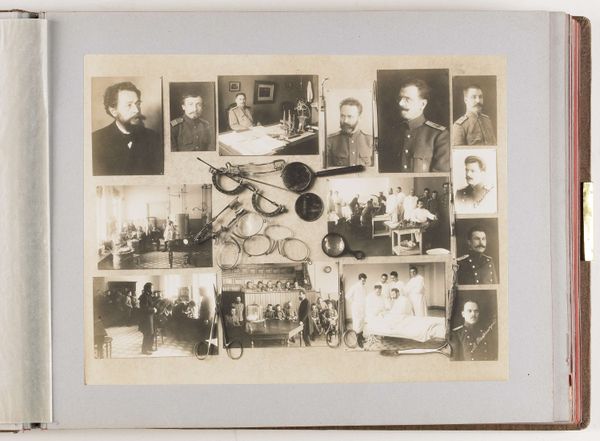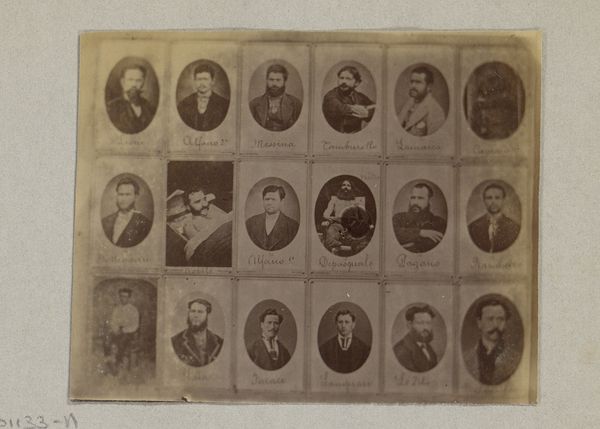
Compositie van zestien foto's van personen en onderwijs aan de Keizerlijke Militair-Medische Academie, gecombineerd met decoratie van medische instrumenten 1913
0:00
0:00
photography, photomontage
#
portrait
#
photography
#
photomontage
#
academic-art
Dimensions: height 228 mm, width 288 mm
Copyright: Rijks Museum: Open Domain
Curator: This is "Composition of Sixteen Photographs of People and Education at the Imperial Military Medical Academy, Combined with Decoration of Medical Instruments," a photomontage created around 1913 by V. Sabel’skij. It offers us a fascinating, if somewhat unnerving, glimpse into early 20th-century medical training. Editor: My immediate reaction is one of institutional dread. It's like looking into a perfectly ordered, sterile world, reflecting the rigidity of that time period's class structures and its attitudes toward progress. I see power dynamics written all over those faces. Curator: That's an astute observation. As a product of the Imperial Military Medical Academy, it served as a kind of institutional self-portrait. The individual photos, arranged in a grid, showcase faculty, students, and scenes from medical training. It reflects the high prestige of military medicine within the Tsarist Russian context. Editor: Precisely. And the medical instruments worked into the composition are especially telling. The cold precision of science presented as tools of power, instruments of potential both to heal and to control bodies. Who had access to these instruments and who became the subject of experimentation becomes a critical inquiry. Curator: Absolutely. And let’s not forget the tradition of academic art—the almost obsessive detailing, a demonstration of control through representation itself. Notice the emphasis on order, hygiene, the supposed clinical detachment. Editor: Yes, but this carefully constructed image reveals as much as it conceals. Consider, for example, the very few, if any, depictions of patients outside of the staged instructional tableaus. That lack suggests that medical advancement can proceed detached from ethical consideration or genuine caring for those it impacts. Curator: An incisive critique. The composition style lends itself to that idea as well: separate elements carefully arranged for visual impact. There seems little awareness for interconnectivity, especially within the classroom settings depicted. Editor: I agree. The photomontage also serves as a window onto early photographic techniques used for promotion and documenting scientific knowledge. How would this collage have been interpreted in its day compared to now? That divergence alone makes it worth pausing here. Curator: I hadn't considered it in that light. Editor: To think this was once intended as an uncritical tribute of progress... but here we are now, parsing the complexities layered into this early-modern document. History certainly casts an unflattering glow on its legacy. Curator: An impactful claim. Food for thought for our listeners to further mull on!
Comments
No comments
Be the first to comment and join the conversation on the ultimate creative platform.


